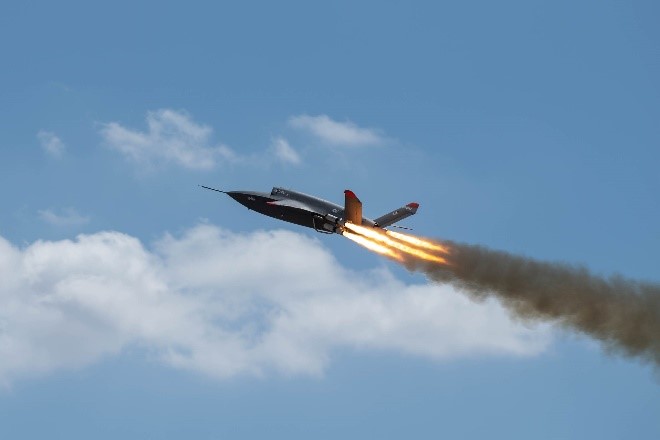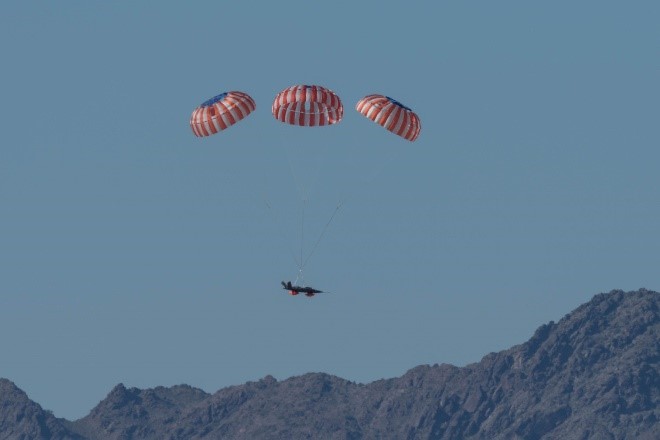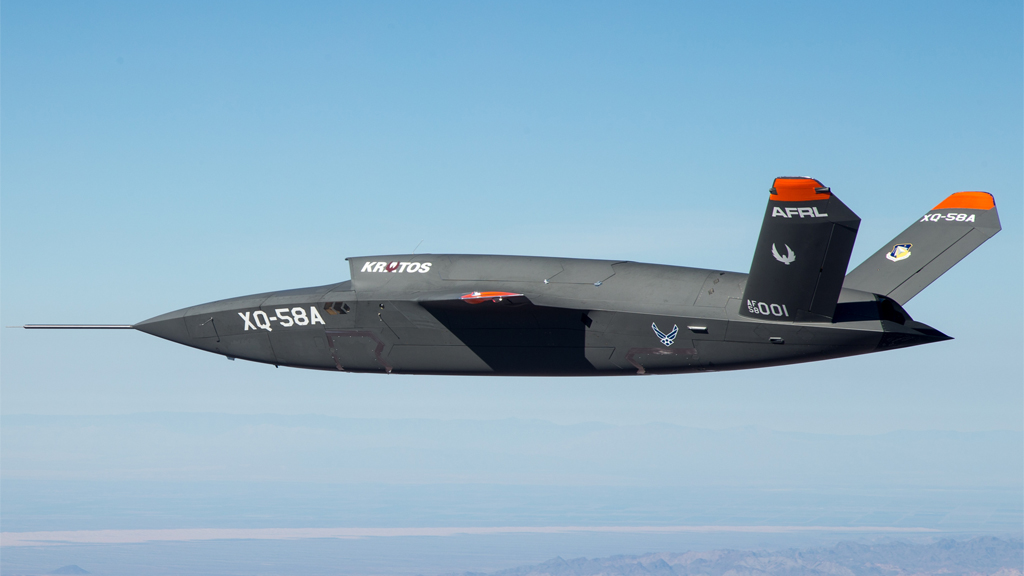Little by little, the US Air Force is preparing its future systems, including future UAVs to accompany manned aircraft. To achieve this, many projects and prototypes have been developed, including the XQ-58A. The latter had carried out its flight tests in Arizona, and the transfer to Eglin Air Force Base in Florida heralds the start of full-scale tests, including the accompaniment of manned combat aircraft, in complete autonomy.
A significant move for the future
The development of a 6th generation aircraft for the US Navy and the US Air Force is not just about a high-tech fighter aircraft but a system composed by a manned aircraft and autonomous drones (more info in this article). With this in mind, the US Air Force is looking to develop demonstration drones to already experiment with the autonomous drone-piloted combat aircraft concept. The arrival of the first of two USAF XQ-58A Valkyrie UAVs at Eglin Air Force Base (Florida, USA) on November 9 marks the start of the experimentation. The transfer was announced by Eglin AFB (link to announcement) and the two drones will be integrated into the 40th Flight Test Squadron.
The Valkyrie is a low-cost, high-performance drone developed by Kratos Defense & Security Solutions and the U.S. Air Force Research Laboratory (AFRL). The drone took off for the first time in October 2019 for an inaugural flight that lasted 90 minutes, less than two and a half years after the contract was signed. Flight testing was being conducted at Yuma Proving Ground (Arizona, USA), but the facilities and airspace did not allow the USAF to conditionally test both drones, hence their transfer to Florida. In addition to land-based airspace, Eglin Air Force Base also offers more than 342,990 square kilometers of airspace over the Gulf of Mexico - about two-thirds the size of France. The data collected during these tests will allow the USAF to better orient the development of future drones to accompany its 5th and 6th generation combat aircraft. The program concerning these operational drones (Collaborative Combat Aircraft, CCA) should moreover be launched in fiscal year 2024.
The Eglin base will also be used in the test since the autonomous drone is a recent concept, what's more as far as the Valkyrie is concerned: the facilities, infrastructure and all the logistics have to be thought of and installed and this without any precedent. The base will also host a data center specific to XQ-58A flights and allowing to improve the internal system of the UAV. This one is thought in open architecture in order to help the integration of future improvements or modifications. In particular, it allows the drone to determine the best route to a given point in order to respond to an order given from a ground control station or fighter aircraft.
The first full-scale tests should be launched by the end of 2022 and the first tests with manned fighter aircraft are announced for the fall of 2023. It should be noted that this drone is not dependent on a runway and can take off from a semi-trailer truck or a container and land using parachutes. In fact, on November 3, a second XQ-58A Block 2 demonstrated this capability at the Yuma Proving Ground (images at the end of the article). The Block 2 already offers improvements with better flight and lift performance (not yet accurately disclosed).
Technical data
These are only for the base version and not the XQ-58A Block 2.
- Length: 9.14 meters
- Span: 8.23 meters
- Height: 2.53 meters
- Cruise speed: 0.72 Mach (889 km/hour)
- Altitude: between 15 and 13,716 meters
- Range: 5.556 kilometers
- Carrying capacity: 272.155 kilograms internally (payload bay) or externally
- Maximum takeoff weight: 2.7 tons at takeoff
On March 26, 2021, an XQ-58A had dropped an ALTIUS-600 multi-mission UAV from its payload bay.




Découvrez cet article sur Air&Cosmos

